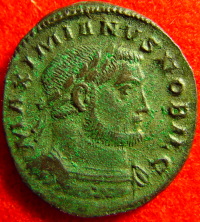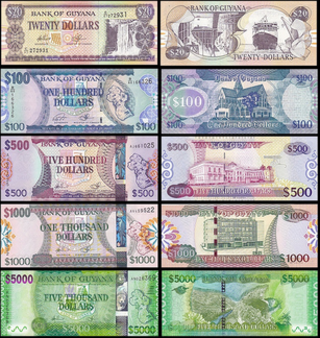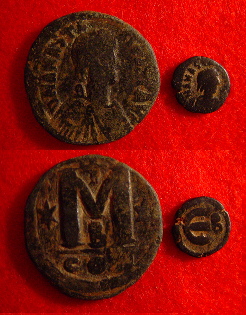
The miliarense (neuter form of the late Latin miliarensis, "pertaining to a thousand"; plural: miliarensia) was a large silver coin, introduced to the late Roman monetary system in the early 4th century. It was struck with variable fineness, generally with a weight between 3.8 and 6.0 grams, and a diameter of c. 23–24 mm. The miliarense was struck first under Constantine the Great (r. 306–337). [1]

Latin is a classical language belonging to the Italic branch of the Indo-European languages. The Latin alphabet is derived from the Etruscan and Greek alphabets and ultimately from the Phoenician alphabet.

Constantine the Great, also known as Constantine I, was a Roman Emperor who ruled between 306 and 337 AD. Born in Naissus, in Dacia Ripensis, town now known as Niš, he was the son of Flavius Valerius Constantius, a Roman Army officer. His mother was Empress Helena. His father became Caesar, the deputy emperor in the west, in 293 AD. Constantine was sent east, where he rose through the ranks to become a military tribune under Emperors Diocletian and Galerius. In 305, Constantius was raised to the rank of Augustus, senior western emperor, and Constantine was recalled west to campaign under his father in Britannia (Britain). Constantine was acclaimed as emperor by the army at Eboracum after his father's death in 306 AD. He emerged victorious in a series of civil wars against Emperors Maxentius and Licinius to become sole ruler of both west and east by 324 AD.
There were two kinds of miliarense coins: light and heavy. It took 14 heavy miliarensia and 18 light miliarensia to equal one gold solidus (as also introduced by Constantine). Miliarensia are highly desired by numismatists of the present day, due to both the rarity of the denomination (far less common than the siliqua ) and the often exquisite execution of both bust and reverse types, which led to many being used as pendants or mounted in antiquity.

The solidus, nomisma, or bezant was originally a relatively pure gold coin issued in the Late Roman Empire. Under Constantine, who introduced it on a wide scale, it had a weight of about 4.5 grams. It was largely replaced in Western Europe by Pepin the Short's currency reform, which introduced the silver-based pound/shilling/penny system, under which the shilling functioned as a unit of account equivalent to 12 pence, eventually developing into the French sou. In Eastern Europe, the nomisma was gradually debased by the Byzantine emperors until it was abolished by Alexius I in 1092, who replaced it with the hyperpyron, which also came to be known as a "bezant". The Byzantine solidus also inspired the originally slightly less pure Arab dinar.

The siliqua is the modern name given to small, thin, Roman silver coins produced in the 4th century A.D. and later. When the coins were in circulation, the Latin word siliqua was a unit of weight defined by one late Roman writer as one twenty-fourth of the weight of a Roman solidus.
"Siliqua vicesima quarta pars solidi est, ab arbore, cuius semen est, vocabulum tenens."
A siliqua is one-twentyfourth of a solidus [coin] and the name is taken from the seed of a tree.
A variant of the original denomination was revived in the Byzantine silver coinage from the 8th [2] to the 11th centuries (see miliaresion ).

The miliaresion, was a name used for a number of Byzantine silver coins. In its most specific sense, it refers to a type of silver coin struck in the 8th–11th centuries.










